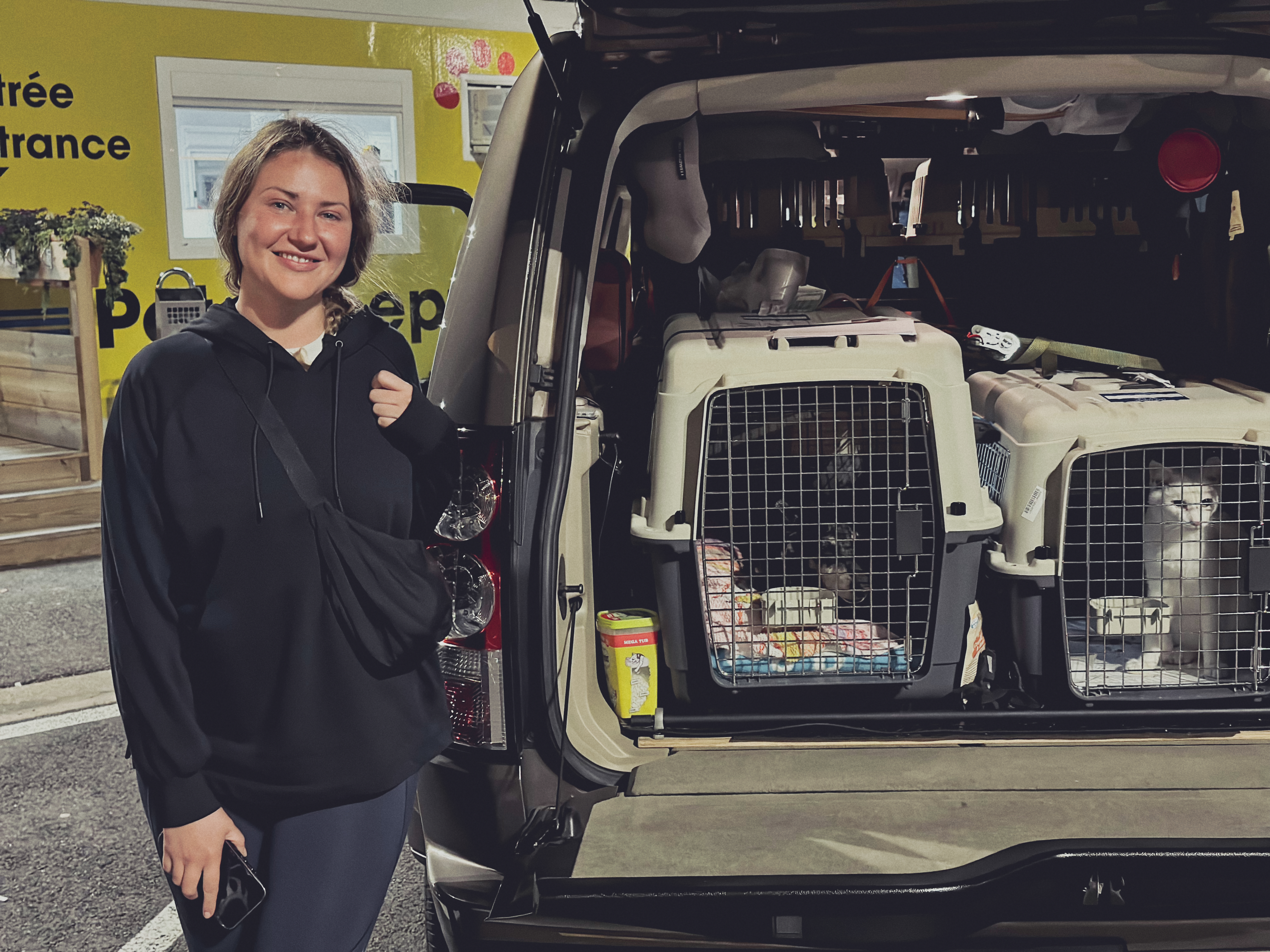The Problem with Commercial Transportation of Pets: Risks and Cruelty

The Problem with Commercial Transportation of Pets: Risks and Cruelty
Transporting pets is a complex process that requires attention not only to their physical needs but also to their psychological well-being. However, current regulations limiting the number of animals a single owner can transport often force pet owners to rely on commercial transportation services. This creates numerous issues related to the welfare of pets and the humane treatment they deserve.
Risks of Commercial Pet Transportation
- Lack of Individualized Care
Commercial pet transportation treats animals as cargo. Pets are often transported in cargo holds with minimal supervision. The carrier’s responsibility is limited to the safe delivery of the “freight,” and any suffering or death of an animal during transit is frequently dismissed as “natural risks.”
- Disregard for Psychological Needs
Commercial transport often involves the shipment of multiple animals together.
The presence of many animals in confined spaces exacerbates stress caused by noise, odors, and the absence of human contact.
Pets experience complete isolation for hours or even days, leading to fear and panic reactions.
- Transport Conditions
Dirty crates, lack of exercise, and poor hygiene are common in commercial transport.
Many carriers do not provide access to water or food, especially during long journeys.
The inability to control temperature in cargo holds can result in overheating or hypothermia.
- Extended Transit Times
Commercial routes often involve long stops, layovers, or delays at transit points, increasing the total travel time.
Every extra hour in such conditions adds significant strain to the pet’s health and well-being.
- Cruelty as a Systemic Issue
Commercial pet transportation prioritizes cost efficiency over animal welfare. As a result, basic needs such as exercise, clean enclosures, and emotional support are entirely neglected. Transportation becomes a severe ordeal for pets, where their well-being is treated as an afterthought rather than a priority.
- Increasing the allowable number of pets for personal transportation under strict compliance with veterinary requirements.
- Revisiting Transportation Regulations
- Establishing Standards for Commercial Transport
Mandatory requirements for exercise, clean enclosures, and comfort.
Responsibility for the psychological well-being of pets and adherence to hygiene standards.
- Recognizing Pets as Family Members
If legislative authorities, which have fallen significantly behind societal needs and development, finally recognize cats and dogs as legal members of the family, the issue of cruelty in transportation will resolve itself. Transporting animals in conditions that cause them suffering would become a strictly prohibited practice.
Relying on commercial carriers to voluntarily provide humane transportation for pets is unlikely. In practice, the root of the problem lies in the early stages of organizing pet transportation. When a carrier understands that safe and comfortable transport is only feasible with a limited number of animals—no more than five or six—they naturally move away from using noisy metal cargo vans with fixed cages. Instead, they transition to passenger vehicles, which are more suited to the needs of cats and dogs. Such carriers will never resort to cruelty toward the animals in their care.
The problem is not merely about defining transportation standards but in the reality that 99% of carriers who transport pets in cargo vans willingly accept cruelty as part of their treatment of what they perceive as "goods."
- Educating Pet Owners
Pet owners need to understand that commercial transportation does not guarantee humane treatment of their animals.
- Conclusion
Commercial pet transportation, despite its demand, remains a system where the welfare of pets is not a priority. The lack of individual attention, disregard for stress, and poor transport conditions make this practice inherently cruel. Solving this issue requires revising regulations to protect both pet owners and their animals, ensuring every pet passenger travels in conditions that prioritize their safety and comfort.
To draw a clear distinction between commercial pet transportation and pet travel, consider how customs authorities handle your pet at the border:
Commercial Movement: Your pet is treated as "goods."
Pet Travel: Your pet is recognized as a "Family Member."
And remember, "cargo" can potentially be classified as contraband. We all understand the consequences of being deemed contraband.
Commercial movement of cats and dogs is necessary only in one specific scenario: the sale and resale of animals bred by commercial producers. These breeders engage in uncontrolled mass production of kittens and puppies, despite such activities being prohibited by law. However, other regulations concerning commercial movement actively encourage this practice, often at the expense of basic health and safety standards. At border crossings, the "goods" are inspected only through paperwork, with the focus solely on the correctness of documentation rather than the well-being of the animals.
Vlad A`KOTLIS



 Loading More Items
Loading More Items